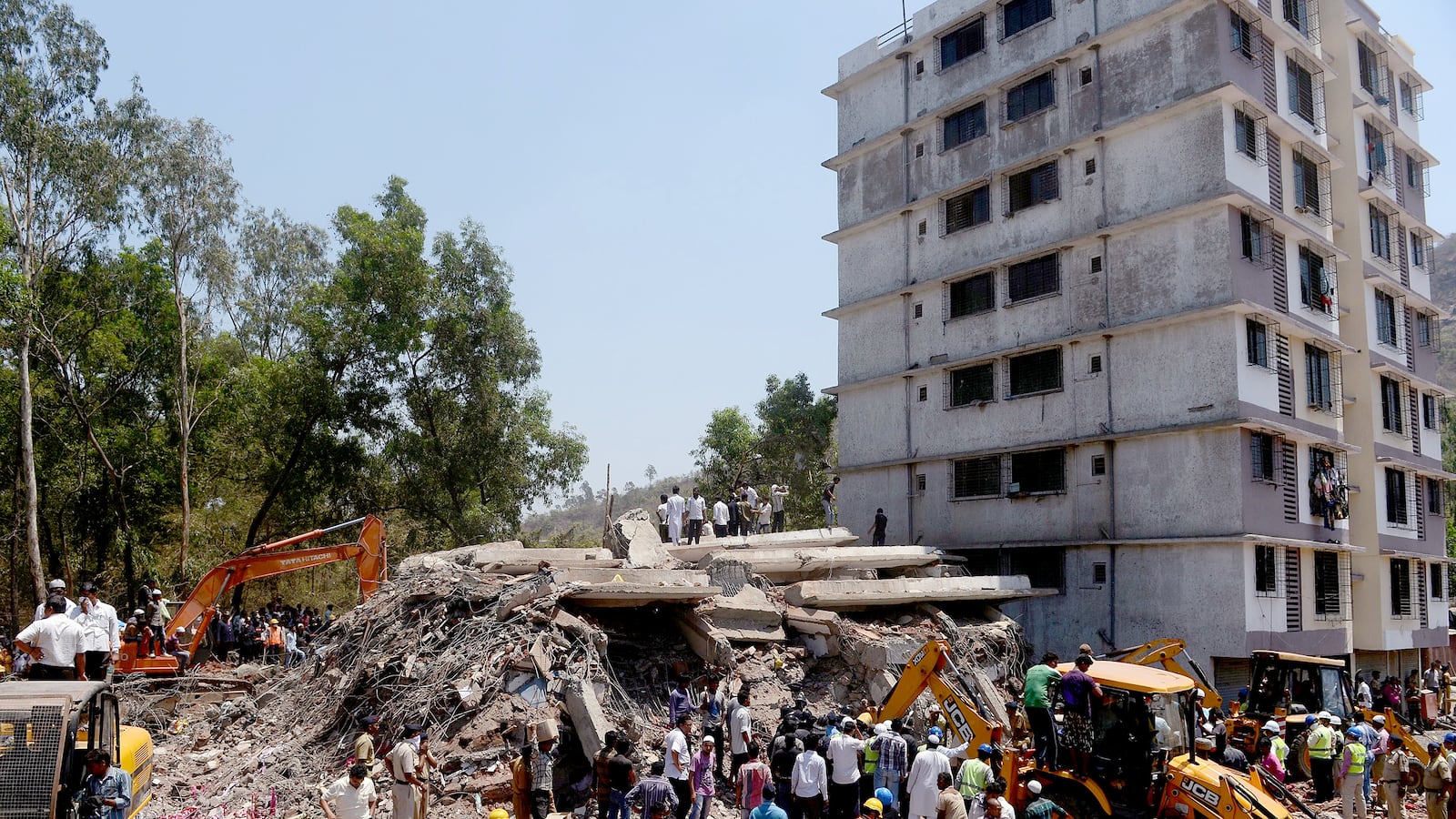In the Mumbai suburb of Santacruz on Wednesday April 3, 43 homes were destroyed. These were apparently illegal.
In the rather more distant Mumbai suburb of Mumbra on Thursday April 4, an entire residential building, seven floors tall, was destroyed. The building was apparently illegal.

The parallels, such as they are, end there. The Wednesday destruction was performed by the government. These were 43 slum homes, supposedly built on Railways and Defence Ministry land. The Defence Ministry wanted the land, the Railways promised to return it, 43 families were suddenly homeless. They hardly get any sympathy, because their homes were “illegal.” (Plenty of us even refer to the people who live in such homes as illegal.)
The Thursday destruction was courtesy of that meaningless euphemism "an act of god." Not really, but bear with me. This was a building under construction. It collapsed, killing 75 people and leaving dozens injured. They get plenty of sympathy, deservedly so, but this apartment block they called home was illegal too.
Think of these two episodes as a microcosm of the state of housing in this great city.
Pronouncing illegality, governments will often undertake demolitions of slum houses. In early 2005, for example, the government tore apart 80,000 homes across northern Mumbai, leaving nearly half a million residents suddenly homeless. (Imagine the city of New York razing every home on Staten Island). And also because of illegality, or poor construction, or shoddy maintenance, or all of the above plus incessant monsoon rains, buildings in this city regularly crumble to the ground. In 1997, for example, an office complex fell apart, killing 15 people. (Imagine the Flatiron building collapsing one sunny, rush-hour evening).
But the April 4 Mumbra collapse was one of our worst yet. Seventy-five Indians are dead because of slipshod construction and standards blinked at by all concerned, features not unknown to those who search for housing in this city. Well before it was finished, the builders were “stocking it with people desperately hungry for housing,” a ploy “to thwart any possible demolition.” (There is something pernicious and perverse about this business of “stocking,” and anyway it’s not that occupied homes manage to thwart demolitions).
And why were these stocked folk "desperately hungry for housing"? Because the housing boom in Mumbra should really be seen as a long-term fallout of the horrific killings in Mumbai in 1992–93. Those weeks of violence drove thousands of residents from the island city, seeking safety in far-flung suburbs. Mumbra then was “largely rural,” but the influx meant a demand for housing that persists to this day. What that has produced is a suburb in which, according to the chief minister, 90 percent of the buildings are illegal.
Ninety percent!
It's intriguing that the chief minister uses such language, because “illegal” is a word that governments have long used for slums and shanties. This, even though slums and shanties house close to two thirds of this city's residents. Hearing the word, we residents of the city's high rises nod our heads righteously. Yet as the journalist Naresh Fernandes reminded us in a series of tweets after the Mumbra tragedy, an edifice built by two powerful politicians, one a previous Chief Minister, is illegal. A well-known residential/commercial complex is illegal. The High Court observed that a popular city mall complete with a Rolls-Royce showroom—oddly enough, across the street from the office complex that collapsed in 1997—has “some irregularity.” For good measure, the world’s most ostentatious residence has an illegal parking lot.
In fact, it's likely that a great number of builders in this city flout one rule or another during construction, or pay money to fudge the title to the land they are building on, or pay money so officials overlook some illegality or other. I mean, an odious builder of my acquaintance once announced that he had fitted a building he had just finished with a wider water pipe than the municipality allowed. A bribe had smoothed the way for this, of course, but he recovered that cost via the premium he was charging his buyers. After all, they would get more municipal water than they were entitled to. The astonishing thing is that he said buyers saw this as a feature and were willing to pay the premium.
Or maybe it isn't so astonishing. Only slum housing is illegal, right?
Of course, not one of all these buildings has been demolished. Once in a while one of them collapses under the weight and contradictions of its own illegalities.
And it takes a tragedy like that to open our eyes to everything that's twisted about the building trade in this country. Or does it?






